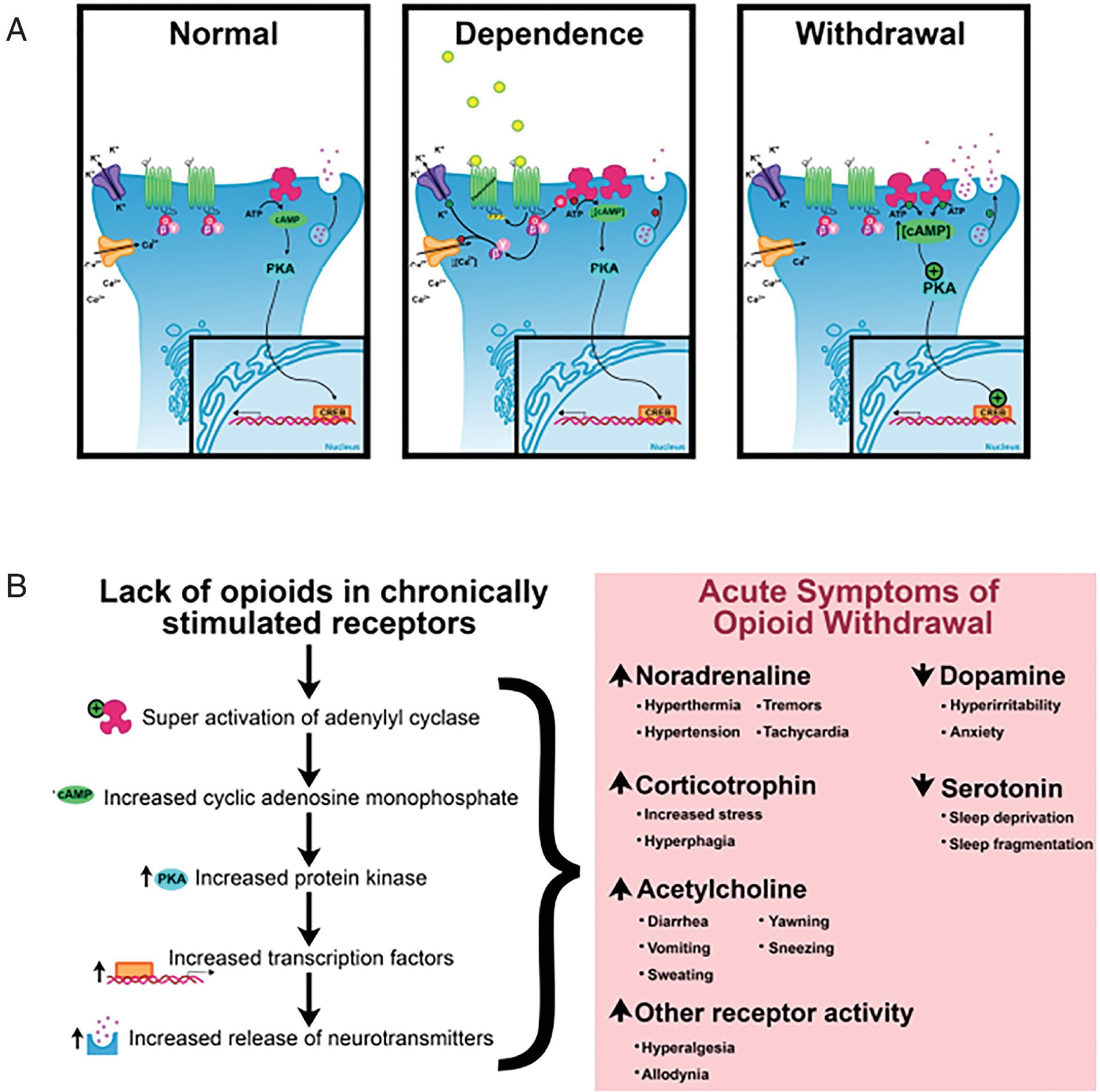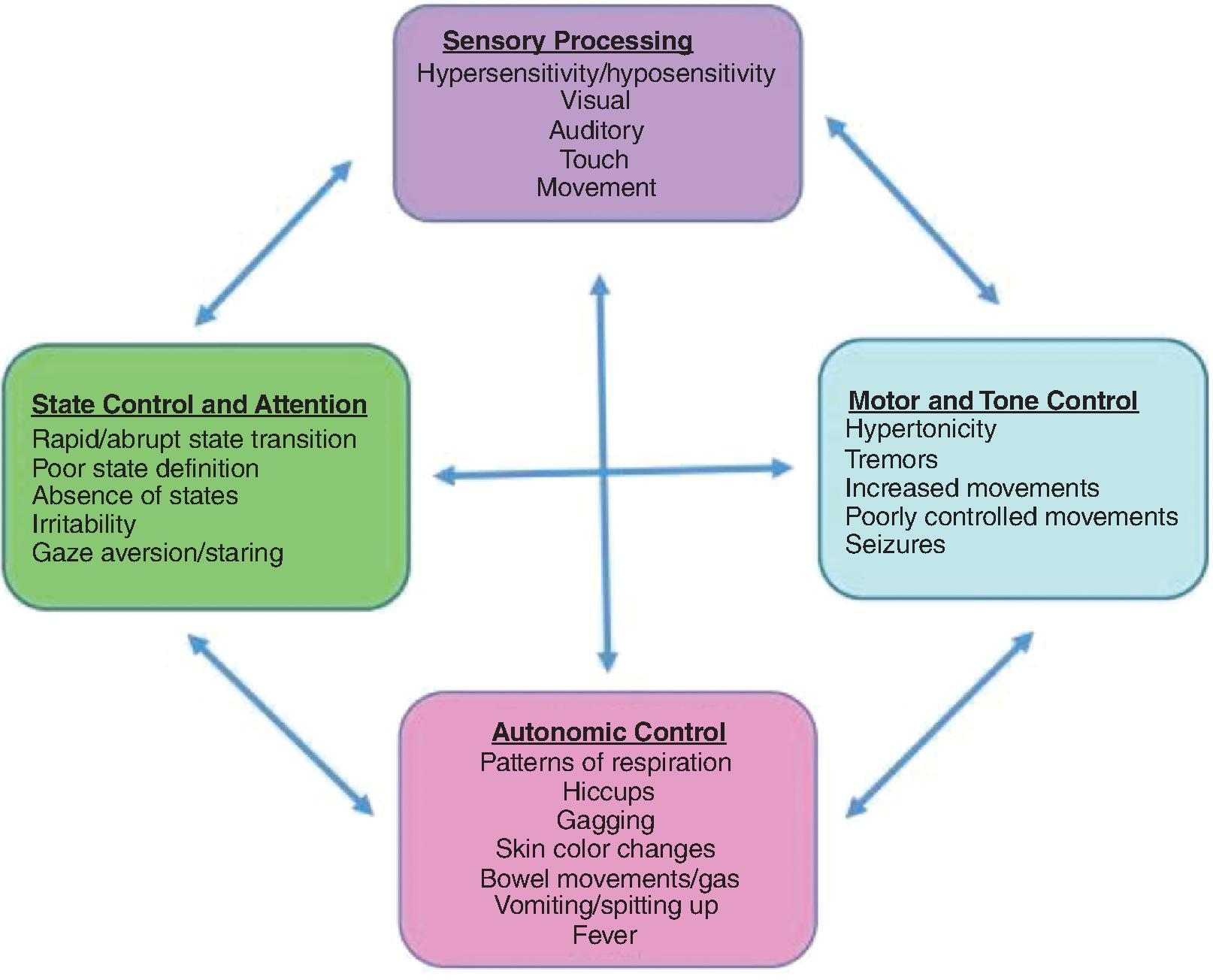Physical Address
304 North Cardinal St.
Dorchester Center, MA 02124
In the United States an infant is born every 15 minutes who will develop symptoms of neonatal abstinence syndrome (NAS); each year, about 32,000 infants are estimated to develop NAS.
The exposure of the developing fetus to stimulants, alcohol, cannabinoids, and antidepressant medication can all have a negative impact. To refer specifically to the impact of opioids, the term neonatal opioid withdrawal syndrome (NOWS) is preferred.
We have summarized the information on the impact of transplacentally transferred opiates on the developing fetus. Various therapeutic options that are currently available for the management of NOWS or are under evaluation have been discussed.
The effects of transplacentally transferred pharmacologic stimulants such as cocaine, methamphetamine, and prescription drugs; herbal stimulants such as kratom tea; alcohol; cannabinoids; and antidepressant medications have been described in separate sections.
In the United States an infant is born with neonatal abstinence syndrome (NAS) every 15 minutes, with an estimated 32,000 babies with NAS born every year. This estimates only the infants with symptomatic withdrawal after prenatal opioid exposure. Additional use of substances during pregnancy, such as stimulants, alcohol, cannabinoids, and antidepressant medication, can all result in negatively impacting the developing fetus. Thus it is paramount to understand the mechanism of how each substance can result in exposure to the fetus and if any known therapies are effective to mitigate these changes.
Opioids are a class of drugs that are usually used to reduce pain. This can include prescription medication, such as oxycodone, hydrocodone, fentanyl, morphine, and methadone, as well as illicit substances such as heroin. Use of these drugs by pregnant women can result in adverse outcomes such as stillbirth or preterm birth, NAS, and birth defects. From 1999 to 2014, across the United States, the rates of opioid use disorder at the time of delivery more than quadrupled. Infants exposed to opioids throughout pregnancy develop a dependence on the drug, with a resultant withdrawal once the drug is no longer present. The withdrawal was previously referred to as NAS, which is now more specifically termed neonatal opioid withdrawal syndrome (NOWS). Opioids can cross the placenta, thus resulting in exposure to the fetus. The following describes placental transport of opioids, the resultant symptoms in infants after birth, current therapeutic options, and the resultant impact on development.
One puzzling aspect of neonatal opiate withdrawal is the lack of association between the maternal opiate dose during pregnancy and the incidence or severity of NOWS. A recent systematic review confirms the results of many smaller studies, namely that there is no currently known relationship between the maternal dose of methadone and the incidence or severity of NOWS. This lack of association is likely because the current thinking on the maternal–fetal–neonatal transfer and effect of opiate medications is oversimplified and does not account for the potential impact of drug metabolism and drug target variability. This drug metabolism and drug target variability is influenced by maternal and fetal genetics as well as the stage of gestation and fetal development. There have been some important efforts to understand the pathogenesis of NOWS ( Fig. 55.1 ), but we still do not have all the answers.

Many factors can affect the amount of free drug in the maternal circulation available for transplacental fetal transfer at any given time. It is known that maternal drug metabolism changes through different trimesters and that environmental factors such as maternal comedication and cigarette use can alter rates of drug metabolism and placental transport. , In addition, there is known genetic variation in opiate metabolism. The efficiency of placental metabolizing enzymes and placental opiate transport proteins such as multidrug resistant protein 1 (MDR1) and breast cancer resistance protein can dictate how much drug reaches the fetus for any specific mother-infant pair.
MDR1 is a known placental transporter for methadone. Using a single layer of placental cells in a dual perfusion model, Nanovskaya et al. showed that methadone transfer to the fetal circuit was increased by 30% by different MDR1 inhibitors. The authors concluded based on this experiment that the concentration of methadone in the fetal circulation is likely affected by the expression and activity of placental MDR1. Data from experiments in an ex vivo placental model provides evidence that buprenorphine transport across the placenta is not mediated by MDR1 but rather via passive diffusion. Buprenorphine crosses placental cells into the fetal circuit to a lesser degree than methadone, with less than 10% of initial maternal concentrations detected on the fetal side of the circuit after a 4-hour equilibration. This decreased transfer of buprenorphine is thought to be secondary to its highly lipophilic nature and significant tissue accumulation within the placenta compared with both the maternal and fetal compartments.
The fetal and neonatal blood-brain barrier also contribute to the risk of developing NOWS. On postmortem samples from gestational age 20 weeks to postmenstrual age 3 months, it was found that p-glycoprotein expression is very limited in the fetal and neonatal period compared with older infants and adults. This is important because p-glycoprotein plays a critical role in efflux of opiates from the central nervous system (CNS) back into the systemic circulation. There are currently no studies in humans to elucidate the extent of methadone or buprenorphine accumulation in the CNS.
Chronic in utero opiate exposure leads to activation of the fetal brain μ-opioid receptor. This leads to intracellular adaptations, including decreased adenylyl cyclase activity and decreased cyclic adenosine 3ʹ,5ʹ-cyclic monophosphate (cAMP) and release of excitatory neurotransmitters. After umbilical cord ligation at birth, there is an abrupt cessation to opiate exposure, which, as the newborn metabolizes and clears the maternal opiate, leads to an abrupt increase in adenylyl cyclase activity and downstream effects ( Fig. 55.2 ). This leads to a large increase in central sympathetic outflow, resulting in the symptoms of newborn opiate withdrawal. These symptoms include autonomic signs such as diarrhea, emesis, yawning, sneezing, and sweating. They also include CNS excitatory signs such as hyperirritability, tremors, hyperthermia, tachycardia, and poor sleep ( Fig. 55.3 ). In extreme and untreated cases of newborn opiate withdrawal, the neuroexcitatory neurotransmitter milieu of epinephrine and norepinephrine can lead to clinical seizures.


The duration of opiate withdrawal symptoms is highly variable and depends in part on which drugs were part of in utero exposure ( Table 55.1 ). NOWS as a result of methadone or buprenorphine tends to last longer than heroin or short-acting prescription drugs, but polypharmacy and multiple in utero exposures are common, and the way these modify NOWS severity and duration are poorly understood. The treatment of NOWS symptoms includes opiate replacement and slow weaning of postnatal treatment, providing the deranged CNS pathways time to reset and return to normal. Current research about optimal NOWS therapy seeks to find a balance between control of symptoms and avoiding prolonged and excessive opiate exposure.
| Onset, Duration, and Frequency of NAS | ||||
|---|---|---|---|---|
| Onset (h) | Frequency (%) | Duration (d) | ||
| Opioids | Heroin | 24–48 | 40–80 | 8–10 |
| Methadone | 48–72 | 13–94 | Up to 30+ | |
| Buprenorphine | 36–60 | 22–67 | Up to 28+ | |
| Prescription medication | 36–72 | 5–20 | 10–30 | |
| Kratom tea (high dose) | 6–33 | Unknown | 5–12+ | |
| Stimulants | Methamphetamine | 24 | 2–49 | 7–10 |
| Cocaine | 48–72 | 6 | Up to 7 | |
| Depressants | THC | 24–72 | Unknown | 7–30 |
| Alcohol | 3–12 | 2–5 | Up to 3 | |
| SSRIs | Prescription medication | 24–48 | 20–30 | 2–6 |
Become a Clinical Tree membership for Full access and enjoy Unlimited articles
If you are a member. Log in here